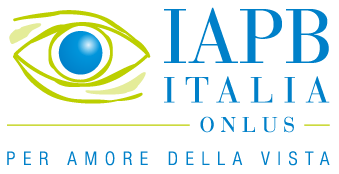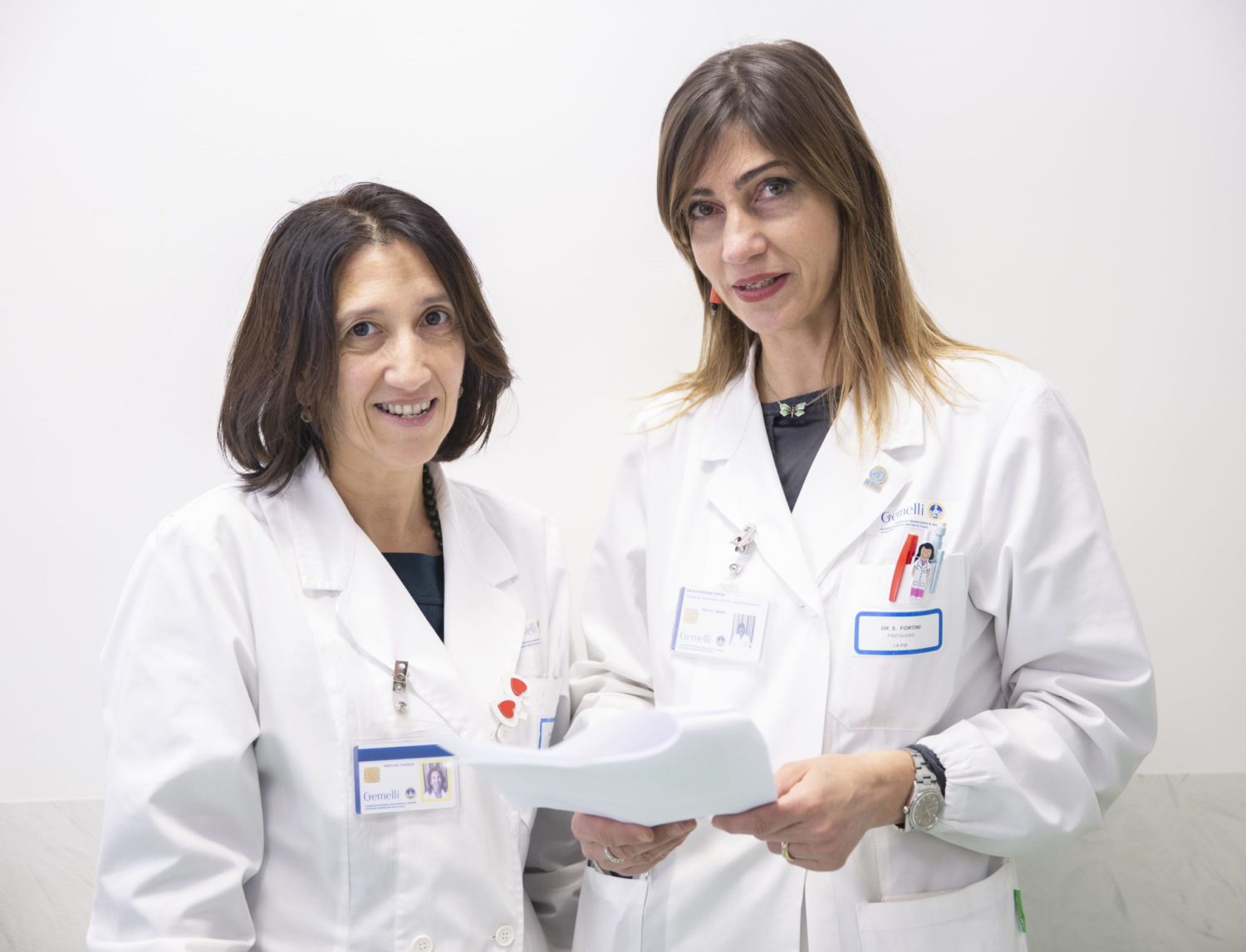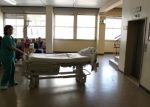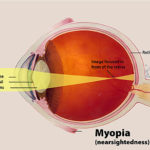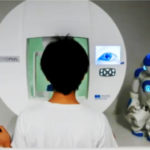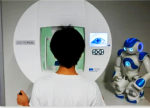The pillar of the rehabilitation model at the National Low Vision Centre consists of welcoming patients as people, so as to help them accept low vision as a part of their daily life and strengthen their inner resources. This approach was presented during the webinar “Psychological intervention in low vision during Covid-19”.
Continue readingThe telemedicine experience of “Linea Verde”, a toll-free consultation service
“Line Verde”, a toll-free eye health consultation service provided by IAPB Italy, is an example of telemedicine. After being active for several years, it proved its worth during the hardest months of the Covid-19 pandemic in 2020. In this interview, Sara D’Angelo and Martina Genzano, two ophthalmologists in charge of the service, describe their experience during the Covid-19 emergency period.
Continue readingIstat: 7 Italians out of 10 perceive themselves to be healthy, but the population is aging
New 2018 report: almost 169 elderly people to every 100 of the young generation. Italy is the second most elderly country in the world.
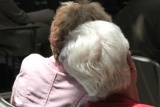 In Italy seven out of ten people claim to be in good health, but according to the annual Report, presented by Istat (Istituto Nazionale di Statistica) on 6th May 2018 in Parliament, the country has the second highest number of elderly citizens in the world in relation to the number of younger people (168.7 elderly people for every 100 youngsters).
In Italy seven out of ten people claim to be in good health, but according to the annual Report, presented by Istat (Istituto Nazionale di Statistica) on 6th May 2018 in Parliament, the country has the second highest number of elderly citizens in the world in relation to the number of younger people (168.7 elderly people for every 100 youngsters).
While it is true that – in comparison to other European Countries – there is a greater homogeneity of the state of health compared to the economic condition, strong differences still remain among Italy’s regions. However, differences in the perception of one’s well being are less marked than in the past inside the same region.
In general, health inequality decreases with increasing health care expenses per capita. Two regions differ from this trend: Molise (in negative terms) and Veneto (more positively). In Italy in 2016, the index of inequality in the perception of personal health showed a minimum level in Valle d’ Aosta and a maximum in Basilicata.
THE EUROPEAN SITUATION
 Regardless of the country observed, the proportion of people who perceive their health to be good increases, moving from lower to higher income levels,; in particular, in the highest income bracket, around nine people out of ten report optimal health conditions in Norway, Sweden and the Netherlands. In the Countries surveyed, the healthy population varies between 65% in Germany to 77% in Norway. The only exception is Portugal, where just under half the population report being well or very well.
Regardless of the country observed, the proportion of people who perceive their health to be good increases, moving from lower to higher income levels,; in particular, in the highest income bracket, around nine people out of ten report optimal health conditions in Norway, Sweden and the Netherlands. In the Countries surveyed, the healthy population varies between 65% in Germany to 77% in Norway. The only exception is Portugal, where just under half the population report being well or very well.
In this respect, the situation in Italy is relatively good, but some critical aspects remain. In fact Istat writes:
The elderly, unemployed young people and the families of retired workers have a greater inequality in their health conditions, shown by a lower proportion of people responding [to be] ‘well’. In the families of employees and in the managing class however, a greater homogeneity is observed.
Source: Istat
Rigenerare la cornea con un idrogel adesivo
Messa a punto negli Usa una “colla” sperimentale biocompatibile con cui si mira a
trattare le lesioni corneali
Cos’è
Si tratta di un idrogel adesivo che può rigenerare uno strato chiamato “stroma” ed essere potenzialmente utile anche in situazioni d’emergenza. Supponiamo, ad esempio, che un gatto ci abbia graffiato in profondità la superficie dell’occhio… “Attualmente – scrivono gli autori dello studio pubblicato su Science Advances da Reza Dana e colleghi – non è disponibile alcun prodotto adesivo progettato per essere integrato nella cornea a lungo termine, sebbene importanti ricerche siano state dedicate allo sviluppo di materiali adesivi che potessero riparare le abrasioni corneali”.
Quindi la “colla” biologica sperimentale crea nuovi legami tra le fibre corneali mediante crosslinking: la superficie oculare può essere così “riparata” in seguito all’esposizione alla luce visibile, che reagisce chimicamente con i componenti del farmaco in fase di test.
Gli esperimenti
Per ora la sperimentazione è stata effettuata unicamente su cavie (conigli) e sembra aver dato buoni risultati nei 14 giorni successivi all’incisione della cornea, che è stata poi rigenerata grazie all’idrogel.
I test, molto approfonditi, hanno riguardato lo studio della struttura del tessuto rigenerato, la sua integrazione col resto della superficie oculare, la resistenza meccanica, ecc. Ora però bisognerà attendere i risultati della sperimentazione umana.
Fonti: Mass. Eye and Ear, Science Advances
161 genetic factors for myopia identified
A META-ANALYSIS ON OVER 160 THOUSAND PEOPLE SHOWED THAT THIS COMMON REFRACTIVE ERROR COULD DEVELOP MORE EASILY IN THE ABSENCE OF PROPER EXPOSURE TO SUNLIGHT

According to researchers, new genetic discoveries – achieved also thanks to powerful software – point to the hypothesis that refractive errors may be caused by alterations in the molecular cascade “triggered” by light. This means that subjects who are not sufficiently exposed to sunlight – especially in early childhood – are in greater danger of developing myopia. The genetic foundations, of what had already been understood on other grounds, are now clearer.

Source: Nature Genetics, Johannes Gutenberg Universitaet Mainz
[[28.3% of the world’s population is myopic (2010), and the trend is growing. While it is predicted that over one third (33.7%) of the inhabitants of our Planet will be shortsighted by 2020, by 2050 such estimates rise to 50% of the global population. (Fonte: Holden BA, Fricke TR, Wilson DA et al., “Global prevalence of Myopia and High Myopia and temporal trends from 2000 through 2050”, Ophthalmology Vol 123, Number 5 May 2016).]]
More comfort with best access to the cares
THE PRIMARY ASSISTANCE AND THE PREVENTION ARE FUNDAMENTAL FOR A MOST ELEVATED QUALITY OF THE LIFE: THE STUDY OF PLOS ONE
 Health and transports. These are the aspects that must be on the top or, at least, suitable to guarantee the comfort of the population in a Country. Particularly the access should be guaranteed to the primary sanitary assistance in acceptable times and the movings must be efficient. Underlines it a new study published on PLOS ONE by a équipe of American university researchers.
Health and transports. These are the aspects that must be on the top or, at least, suitable to guarantee the comfort of the population in a Country. Particularly the access should be guaranteed to the primary sanitary assistance in acceptable times and the movings must be efficient. Underlines it a new study published on PLOS ONE by a équipe of American university researchers.
The effective sanitary service is not only important, but also its perception (therefore also a psychological aspect exists), that is considered a ” strong measure of comfort.” Particularly, even in Countries where an universal (among which Italy) sanitary coverage exists, the access to the cares is correlated well with the well being. For this purpose it is fundamental the prevention, that in the study is considerated an objective indicator. The researchers write:
It is also reasonable that the access to the sanitary assistance mediates the improvement of the comfort offering a major ‘mental peace’ and the necessary support to level of sanitary prevention and generic behaviors for a self-management. If this reasoning is correct, it implicates that to provide access to the primary assistance to all the components of a community could increase the comfort of it.
ARVO, Honolulu, 2018 – The most recent breakthroughs in vision research
HI-TECH EYE RESEARCH HAS “LANDED” IN HAWAII: THE THEME WAS DISCUSSED IN A MEETING FROM 29TH APRIL TO 2ND MAY 2018
 Holographic displays, robots that assist people during eye examinations, visual field testing performed with a common smartphone: a window to the future was opened during ARVO 2018, an annual event, which – inaugurated on April 29th – ended on May 2nd in Honolulu, Hawaii (U.S.A.). Speakers from all over the world, including researchers with an innovative approach, met with a wide range of experts. The Director of the Italian National Centre for Vision Rehabilitation, Dr. Filippo Amore, also took part in the meeting, presenting research conducted with a futuristic visual device which has been conceived for the visually impaired.
Holographic displays, robots that assist people during eye examinations, visual field testing performed with a common smartphone: a window to the future was opened during ARVO 2018, an annual event, which – inaugurated on April 29th – ended on May 2nd in Honolulu, Hawaii (U.S.A.). Speakers from all over the world, including researchers with an innovative approach, met with a wide range of experts. The Director of the Italian National Centre for Vision Rehabilitation, Dr. Filippo Amore, also took part in the meeting, presenting research conducted with a futuristic visual device which has been conceived for the visually impaired.
![]() During the event organised by the Association for Research in Vision and Ophthalmology, alongside these groundbreaking themes, participants also discussed “classic” diseases, such as glaucoma, age-related macular degeneration (AMD), seasonal eye allergies and diabetic retinopathy.].
During the event organised by the Association for Research in Vision and Ophthalmology, alongside these groundbreaking themes, participants also discussed “classic” diseases, such as glaucoma, age-related macular degeneration (AMD), seasonal eye allergies and diabetic retinopathy.].
Main source: ARVO
“Estate sicura” (Safe Summer) campaign launched
RECOMMENDATIONS IN CASE OF HEAT WAVES AND BULLETINS OF THE MINISTRY OF HEALTH
 No to cooling fans with very high temperatures [1]; yes to air conditioners but with the temperature not set too low [2]. These recommendations can be found in the handbook that the Italian Ministry of Health published on the day that the “Estate Sicura 2018” campaign (Safe Summer 2018) was launched, which was accompanied by traditional summer bulletins, reporting on heatwaves in Italy.
No to cooling fans with very high temperatures [1]; yes to air conditioners but with the temperature not set too low [2]. These recommendations can be found in the handbook that the Italian Ministry of Health published on the day that the “Estate Sicura 2018” campaign (Safe Summer 2018) was launched, which was accompanied by traditional summer bulletins, reporting on heatwaves in Italy.
The ministerial recommendations – that are included in the National Prevention Plan against the effects of heat on health – are inspired by common sense, but a number of rigorous scientific studies support them. In particular, we would like to mention the following recommendations:
- Don’t go outside during the hottest hours [3]..
- Improve home and work environments: the simplest measure is by shielding any windows facing south and southwest with curtains and adjustable shutters that block the passage of light, but not air. Air conditioning is of course effective, but it must be used with caution and the temperature must not be set too low in comparison to the temperature outside.
- Drink large quantities of fluids: drinking a lot of water and eating fresh fruit are essential to countering the effects of heat.

- Avoid drinks containing alcohol or caffeine.
- Eat light meals.
- Wear comfortable and light clothes, made of cotton, linen or natural fibres. When outdoors, it is useful to wear light hats of a light colour to protect the head from direct sunlight. [We would like to add that it is also important to wear sunglasses with authorised filters. ]
- Ventilate your car before travelling. In this case, set the temperature of the air-conditioning system to a level about 5 degrees lower than the outside temperature, avoiding directing the vents towards the body. If you must travel, avoid the hottest hours of the day and always keep a supply of water in the car. Never leave babies, children or animals in the car, not even for short periods.
- Avoid physical exercise in the hottest hours of the day. In any case, drink large quantities of fluids if you do physical activity. Athletes should compensate the loss of electrolytes with supplements.

- Take care of people who may be at risk by paying them a visit at least twice a day and checking that they don’t show any symptoms of heat disturbance. Check more often on babies and young children.
[1] over 32° C.
[2] between 25° and 27° C, while previously the advice was 24°-26°
[3] On days when the predicted risk is high, time spent outdoors should be reduced in the hours between 11 a.m. and 6 p.m.
Main Source: Ministero della Salute
More fruit against AMD
CONSUMING ORANGES OR ORANGE JUICE ON A DAILY BASIS COULD CONTRIBUTE TO PREVENTING AGE RELATED MACULAR DEGENERATION: CLAIMS SUPPORTED BY AUSTRALIAN RESEARCHERS
 That fruit and vegetables help protect our retina, especially the macula, has long been known. However it appears that, above all, oranges may be particularly useful in preventing age-related macular degeneration (AMD), although this is yet to be fully understood. A team of Australian university researchers are carrying out research to this effect, and state that, “drinks that contain flavonoids (such as orange juice) are reasonable to be recommended to patients.”
That fruit and vegetables help protect our retina, especially the macula, has long been known. However it appears that, above all, oranges may be particularly useful in preventing age-related macular degeneration (AMD), although this is yet to be fully understood. A team of Australian university researchers are carrying out research to this effect, and state that, “drinks that contain flavonoids (such as orange juice) are reasonable to be recommended to patients.”
Reference is made to consuming at least one portion per day, equivalent to a large orange or 200-300ml of squeezed juice. On Original Research Communications the authors explain:
Flavonoids are bioactive compounds found in foods such as chocolate, tea, red wine, fruit and vegetables. […] They can have an antioxidant and anti-inflammatory action. There is also strong evidence that flavonoids positively affect vascular health through improved endothelial function. Therefore, their role seems promising in reversing oxidative stress and associated inflammatory damage, as well as improving vascular function and clinical signs of AMD.
Other studies have already been conducted to try to find ways to prevent age-related macular degeneration. The authors of the study summarize the results as follows:
Age-related macular degeneration (AMD) is the leading cause of blindness and major reduction of sight among ‘elderly adults.’ Current studies suggest that people affected by AMD should consume dark green leafy vegetables daily, follow low-glycemic diets and eat fish (at least twice per week). The study AREDS (Age-Related Eye Disease Study) showed that taking food supplements containing high doses of vitamin C, β.-carotene, zinc and copper could reduce AMD progression by 25%. [1]
 The factors to be taken into account – also at a lifestyle level – are many: not only diet (it is also important to consume fish regularly), but also not to smoke and take daily physical exercise. Alongside these modifiable aspects there is one that cannot be changed: genetic predisposition. Anyone who has a first-degree relative affected by AMD has a 3-6 times higher chance of being affected by it. In any case, after the age of 60, it is advisable to undergo at least one eye examination per year.
The factors to be taken into account – also at a lifestyle level – are many: not only diet (it is also important to consume fish regularly), but also not to smoke and take daily physical exercise. Alongside these modifiable aspects there is one that cannot be changed: genetic predisposition. Anyone who has a first-degree relative affected by AMD has a 3-6 times higher chance of being affected by it. In any case, after the age of 60, it is advisable to undergo at least one eye examination per year.
Main sources: Original Research Communications, Westmead Institute For Medical Research
[1] However the magnitude of this result has been significantly reduced in a subsequent study
The National Center on Low Vision at the World Ophthalmology Congress
Spotlight on vision rehabilitation during the Live program. Italy sets the international standards on rehabilitation but doesn’t provide the same level of service everywhere in its national territory. “Training, multidisciplinarity, and telerehabilitation are at the heart of both our research activities and our collaboration with the WHO”, says Dr. Filippo Amore, director of the center.
The biennial edition of the World Ophthalmology Congress was held between 26 and 29 June 2020 and it was the first to be organized online as a virtual experience.
The National Center on Low Vision gave two presentations at the Congress: the first focused on the curricula for vision rehabilitation operators; the second revolved around the state of vision rehabilitation in Italy.
“Those two areas are connected,” explains Dr. Filippo Amore, director of the National Center and guest speaker at the Congress. “Through the National Center on Low Vision – which has recently been confirmed as a WHO Collaborating Center for the third triennium in a row – Italy has set the international prerequisites in the field of vision rehabilitation and for the curricula which are recognized by the WHO as the gold standard for the training of vision rehabilitation operators. At the same time, our country lacks the necessary professional skills – in terms of the number of operators and training courses – and resources that would make rehabilitation available to visually impaired people who could really benefit from it, and that’s at least one million people”.
“The international effort of the Center also stems from a desire to help our country. Through scientific research, technological innovation, and training, we wish to extend the best practices in vision rehabilitation both to other low vision centers in Italy and to the national health systems of foreign countries, in the latter case thanks to our collaboration with the WHO”.
“We are currently working on the adoption of remote rehabilitation techniques, to cater to the needs of people who cannot access rehabilitation services near home. We contributed to the development of a software called Eye Fitness, which provides a home-based training platform that can be remotely controlled by our operators”.
These same topics were also discussed during one of the main sessions of the Congress Live program, in front of a virtual audience of 130 experts from all over the world.
“Participating in one of the leading international events in the field of ophthalmology is a great recognition of our work and our multidisciplinary approach, which brings together psychological and ophthalmological assistance, training of the residual vision and also in the use of optical, digital and electronic aids. For us, this was also an opportunity to stress that vision rehabilitation is and should be considered an integral part of eye care. When nothing else can be achieved through surgery or medicines, there’s still a lot that visually impaired people can do to safeguard and regain their personal autonomy. This has been our message since the foundation of the National Center in 2007, and it’s a message that is gathering increasing scientific evidence and international support”.

